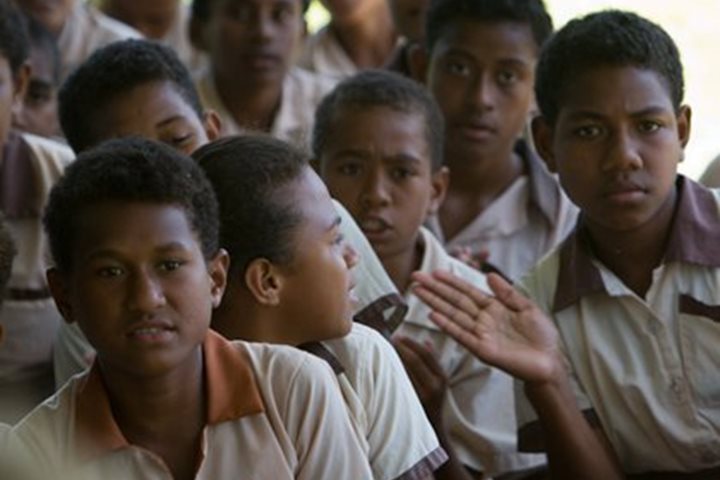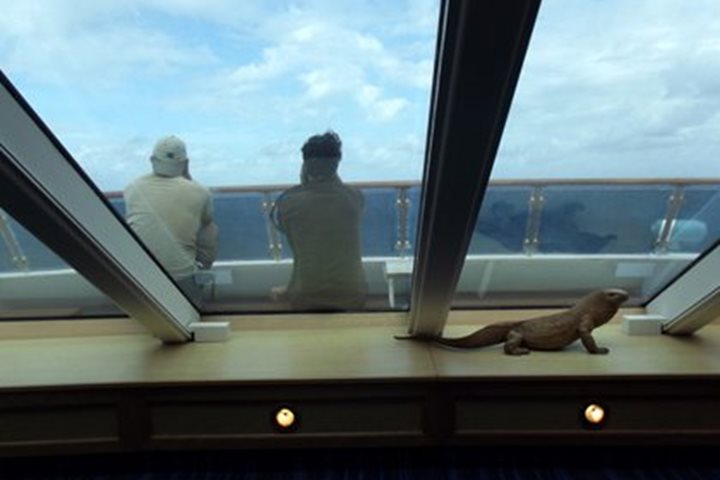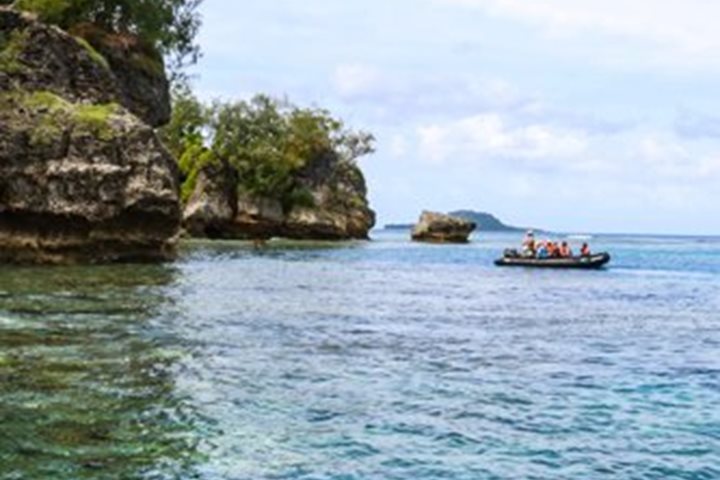At first light this morning we woke to our first sight of Papua New Guinea. As we approached the low, forested islands we could see ahead of us the narrow passage of China Strait, the entrance to Milne Bay. After a fine breakfast in the Outdoor Café we got busy with preparing for all the activities ahead. We began with a couple of short safety briefings on snorkeling and riding the Zodiacs, followed by choosing and fitting our snorkeling gear. By the end of the morning we were ready to go.
While we were busy, the officers of the National Geographic Orion had brought us in alongside the wharf in Alotau, the capital of Milne Bay Province. It was an attractive small town, spread along the waterfront and backed by forested hills. Not far away we could see some colorful commotion at the waterside, an intriguing sight, possibly the canoe festival we had heard about. It was not a planned event, so we just weren’t sure what we might see there.
Leaving the ship, we boarded a small fleet of nice coaches and minibuses and drove a short distance out of town, first to the site of the Japanese invasion and then up into the hills for a pleasant view over the large bay. The next stop took us to a small but excellent craft market, where we found many beautiful carvings, almost all of them from the nearby Trobriand Islands. This made us happy but also rather curious. Why was Trobriand art so well represented here in Alotau? The answer would become clear very soon.
Just two minutes further down the road our buses turned into the big, busy grounds of the canoe festival and we were immediately surrounded by the crowds, color and happy chaos of an absolutely authentic local celebration. Along the water a wonderful variety of canoes had been drawn up on the narrow beach, among them several of the elaborately carved and decorated Kula voyaging canoes from the Trobriand Islands. Now we understood the presence of their beautiful art and artists: they had come over from their home, in their canoes, to participate in the festival. Alongside them were other beautiful crafts from the Western Province, Tufi and other distant parts of the country, a real regatta of hand-carved dugouts and outriggers.
In the middle of the large grounds a band was just getting started on a set that included songs by the Beatles, Kenny Loggins and Tracy Chapman – quite a counterpoint to the traditional regalia of the dancers who had come to perform and celebrate. There were pigs waiting to become dinner, little boys getting into trouble around the canoes and thatch shelters hung with museum-quality artifacts, full of men relaxing in the shade. Every side of Papuan culture was there, thoroughly mixed. And everyone was having a great time, welcoming us with friendly smiles, chatting about their lives and taking our pictures while we took theirs.
This was one of those really lucky, delightful days. A day of expedition travel at its very best, full of rich experience, great fun and unforgettable, unplanned moments.







